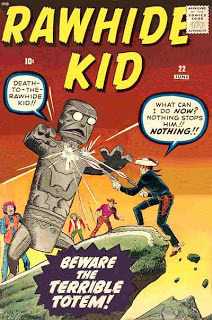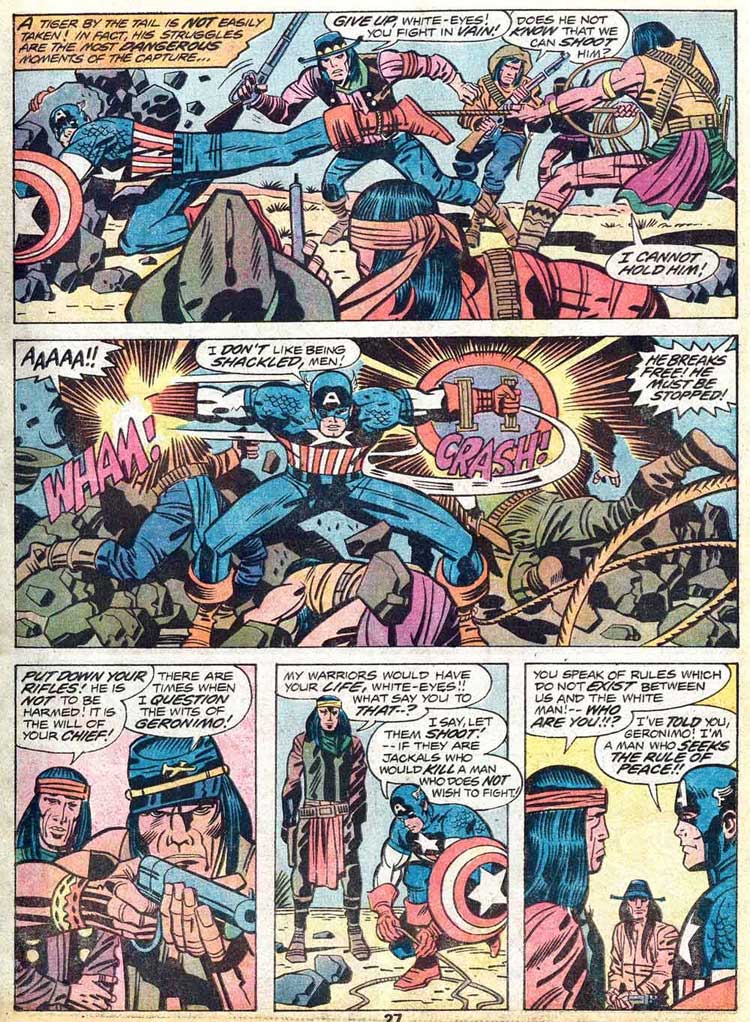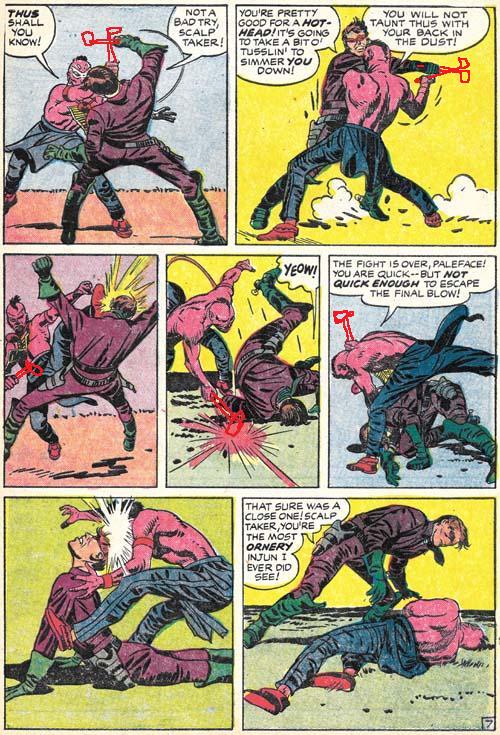By Will Nixon
At that time, comic book story writers saw themselves as part of a tradition of heroic fiction, and so did not usually extract wholesale from existing myths but used elements creatively according to their particular genius. This was the way in which Jack Kirby brought the spirit of the Hopi hero myths to millions of young Americans in the 1950s and 1960s during a time in which people were struggling to find more earth-friendly values.
Jack Kirby (with Stan Lee) invented Spider-Man, who embodies many of the qualities of Grandmother Spider, also known as Spider Woman. Kirby and Lee also invented X-Men, whose original characters included The Beast (the forerunner of Beast Boy, a shape-shifter based on Hopi mythology), Ice Man (somewhat like the North Wind of Ojibway stories), Marvel Girl (who is telepathic, and can "talk in someone's ear" without being seen, but in a different way than Spider Woman can), and the Cyclops (from Greek myth). Later X-Men included Mystique, who is a shape-shifter. Kirby then invented the Incredible Hulk, who is perhaps like Man-Eagle in many respects, only good.
Then he created the Fantastic Four, an arch-enemy of whom was called the Mole Man. Unlike the helpful Mole Man in "Son of Light Defeats the Monster," this one is a subterranean menace who controls and unleashes huge monsters upon the Fantastic Four. The Four include the Thing, a rock creature not unlike the Dene (Navajo) Rock Monster Eagle, Tse ninahaleeh, who lives on Shiprock Mountain; Mr. Fantastic, who stretches; Invisible Girl, essentially like Grandmother Spider who makes herself so small she becomes invisible; and the Human Torch, similar to the Kokosori Zuni fire kachina who descends from the hills to start the Zuni ceremony of shalako on the first week of December. Perhaps contact with these characters has opened our subconscious minds to the teachings of the Hopi, the "Peaceful People."
Beware Terrible Totem Rawhide Kid Tale By Jack Kirby

Kirby's Fourth World
I'll concede that the Hopis' "fourth world" concept may have inspired Kirby. The basic idea of worlds dying and being reborn could be Native, even if the details aren't. The other claims seem farfetched.
But Kirby probably had some familiarity with Native lore. As much as the average American, at least. He drew all kinds of comics, especially Westerns, where Indians were bound to appear.
A few instances:

And Now, Bicentennial Kirby Captain America--Lost In Time!

Whether these few examples signify a special interest in Indians is hard to say. These are a few comics out of the thousands Kirby produced. Probability suggests Indians should've appeared about 1% of the time, so that's all this may be.
Here's a note about a Western comic by Kirby featuring Indians:
Bullseye #6, The Missing Tomahawks


1 comment:
I read the full article. I did think he was reaching a bit when trying to link assorted Marvel superheroes to Native American mythical heroes. Western myths and legends have their share of superhumans, gods, and paranormals.
Post a Comment